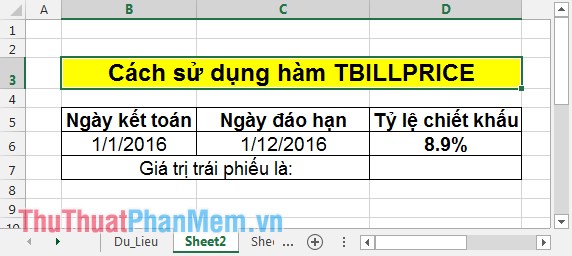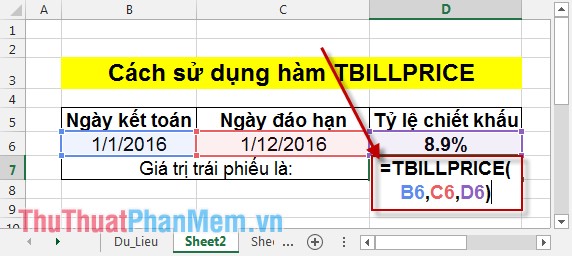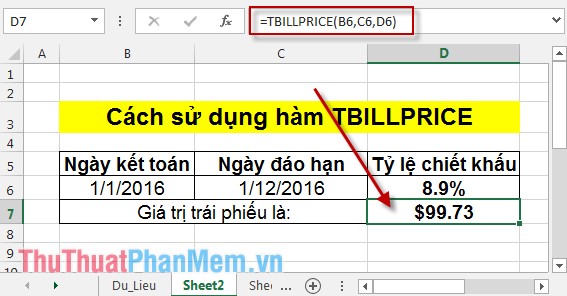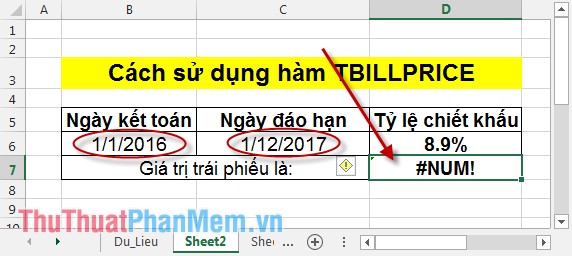TBILLPRICE function - The function calculates the value of treasury bonds by the $ 100 face value in Excel
The following article details the meaning and usage of the TBILLPRICE function - The function of calculating the value of treasury bonds at $ 100 face value in excel.
Description: The function calculates a value based on the $ 100 face value for treasury bonds.
Syntax : = TBILLPRICE (settlement, maturity, discount) .
Inside:
- settlement : The settlement date for securities is the date after the issuance date of bonds to be sold to buyers.
- maturity : The maturity date or the maturity date of the bond.
- discount : The discount rate or the rate of return on bonds.
Attention:
- Functions that perform calculations based on formulas:

In which: DSM is the number of days from the settlement to the expiry date.
- If maturity > discount or discount - maturity > 12 months -> the function returns the error value NUM!
- Where maturity and discount are not valid dates -> the function returns the value #VALUE.
For example:
Calculating the value of bonds with settlement date is 1/1/2016, maturity date is 1/12/2016 and discount rate is 8.9%.

In the cell where the value to enter the formula to calculate: = TBILLPRICE (B6, C6, D6) .

Press Enter -> value of the bond based on face value of $ 100 with an 8.9% discount rate is:

If you enter due date - settlement date> 12 months, the function returns the #NUM error value .

Above is the usage and some notes when using the TBILLPRICE function .
Good luck!
You should read it
- How to use the DAVERAGE function in Excel
- How to use SUMPRODUCT function in Excel
- DB function - The function calculates the depreciation of assets with specific maturity in Excel
- Basic Excel functions that anyone must know
- How to use the SUM function to calculate totals in Excel
- VAR.S function - Function that calculates variance based on a sample, ignoring logical values and text in Excel
 TBILLYIELD function - The function calculates the discount rate for a bond in treasury in Excel
TBILLYIELD function - The function calculates the discount rate for a bond in treasury in Excel VDB function - Calculate asset depreciation by the declining balance method in Excel
VDB function - Calculate asset depreciation by the declining balance method in Excel TBILLEQ function - Calculates the returns corresponding to bonds in treasury in Excel
TBILLEQ function - Calculates the returns corresponding to bonds in treasury in Excel FVSCHEDULE function - Returns the future value of an investment that has variable or adjustable interest in period in Excel
FVSCHEDULE function - Returns the future value of an investment that has variable or adjustable interest in period in Excel Compare ODDFPRICE and ODDLPRICE functions in Excel
Compare ODDFPRICE and ODDLPRICE functions in Excel OR function in Excel, how to use the OR function, and examples
OR function in Excel, how to use the OR function, and examples